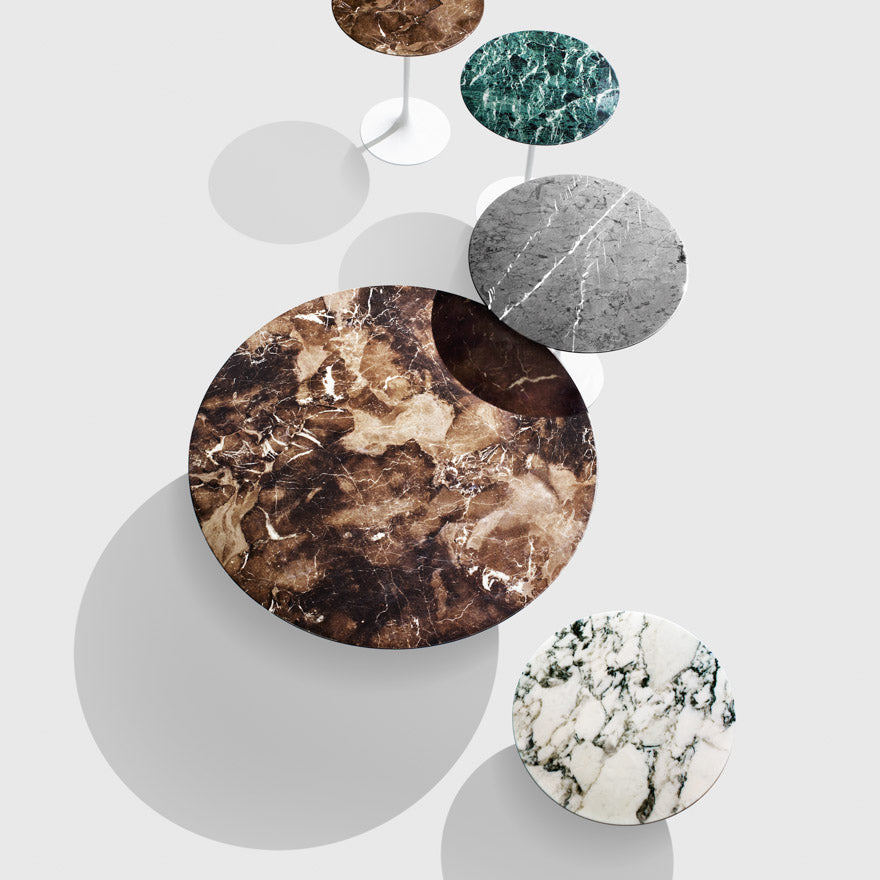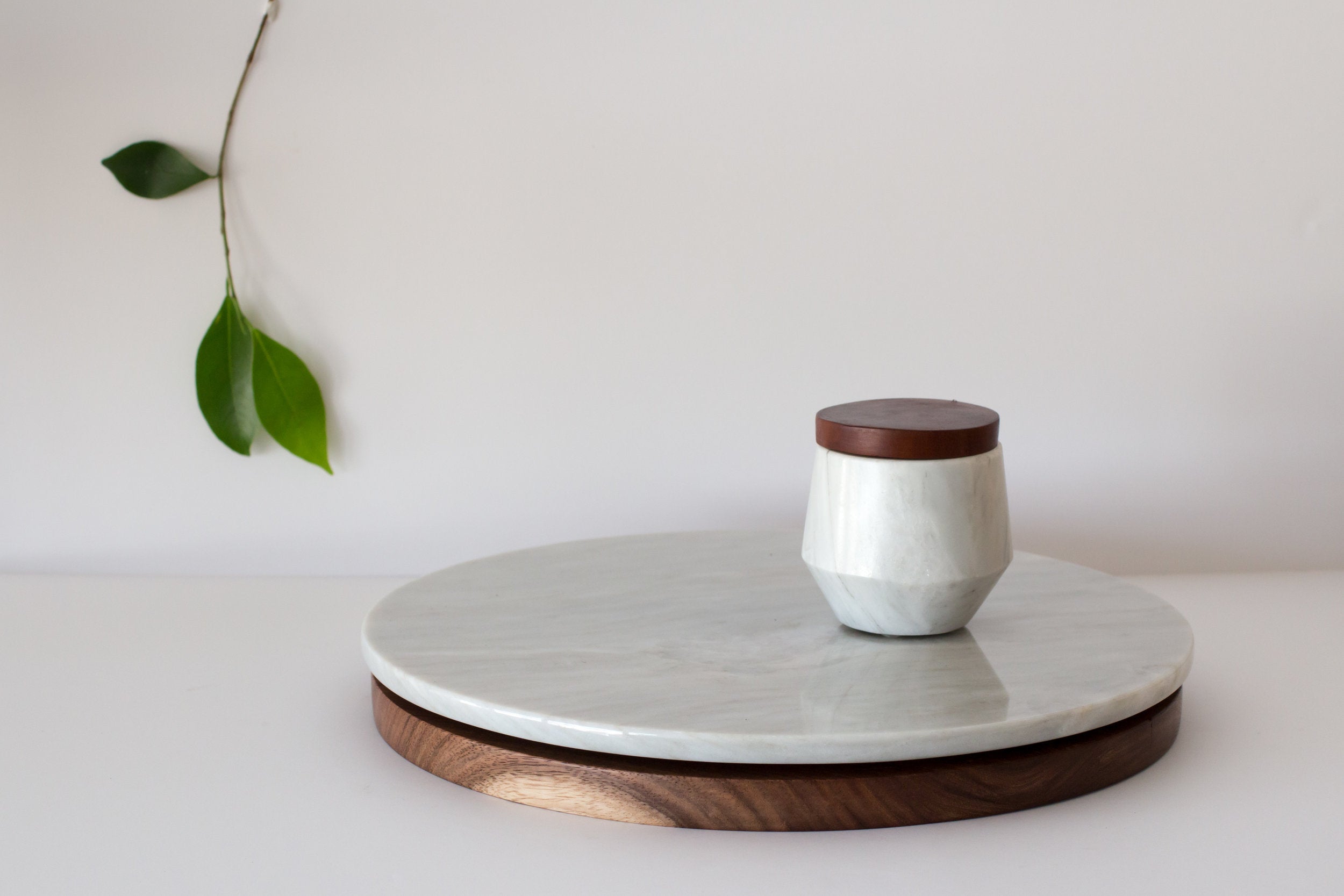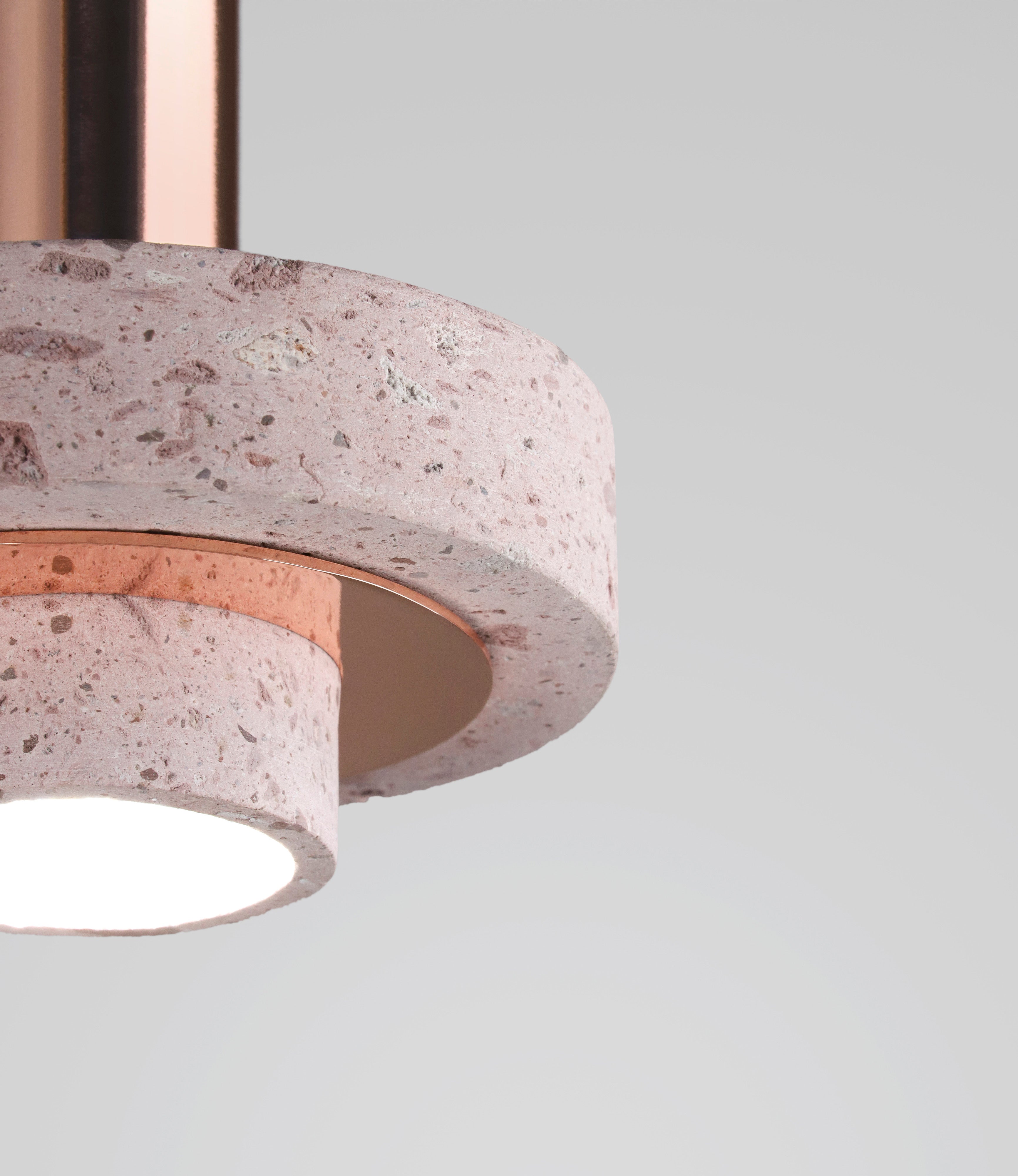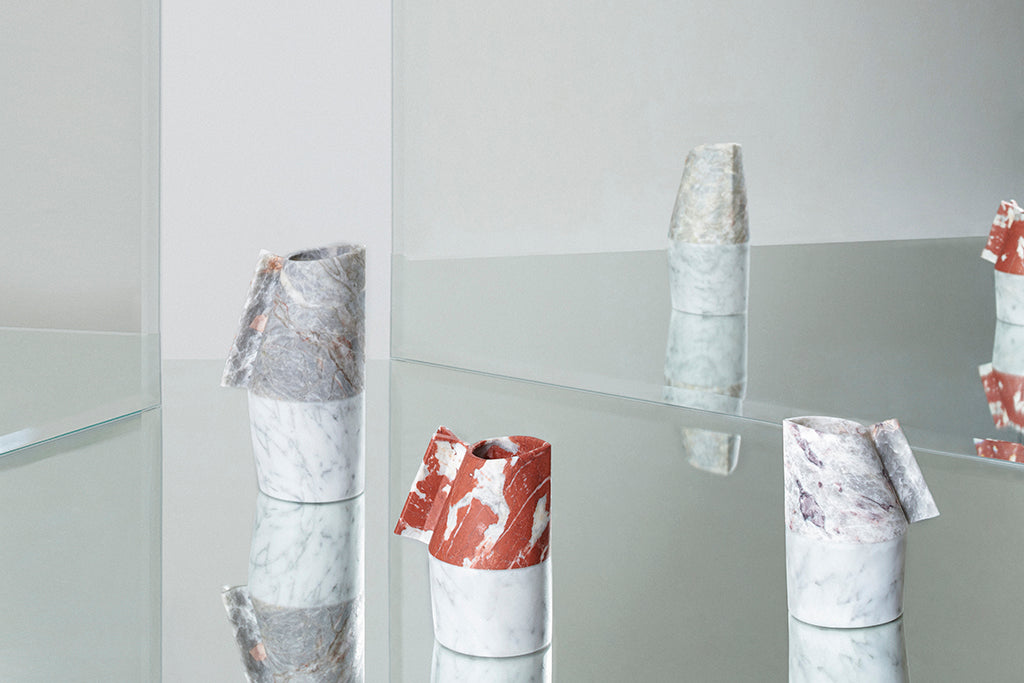If we think about household objects made of stone, there are just a few, when compared to other materials. Rocks’ main uses are for construction: floors, bars, exterior details, applications in bathrooms or coverings.
Undoubtedly, the use of this material in these applications offers good results; however, exploring the application of rock in a less common field is interesting: object design.
The variety of rocks is wide; they are classified in categories when studied. In practical terms, this text refers to stone, exclusively, as the category of industrial rocks for construction and more specifically, to the commercial varieties:
Carbonated: marble, for example. Greatly valued for their beauty and for the shine they offer. These are not as resistant to certain chemical substances and may wear out or break easier than other rocks.
Granitic: granites belong to this category. They have equally interesting visual features and offer great resistance to wear and humidity.
Technological: formulas using different kinds of rocks (among other components), which result in materials with special properties.
Examples
Historically, since the early days of human beings, rocks have been used as raw material to create objects. In the past, they were transformed through sculpting and carving, but these processes evolved as well as the ways to extract them.
Today, there is a big industry that commercializes different rocks and there are also complex tools that allow for new ways to transform them. In design, we now find a series of volumetric explorations with stones, which create objects that are closer to the decorative or artistic categories. There is also a series of functional and less conventional pieces, where rocks are used in an innovative manner, even by combining them and creating assemblies with other materials. Witnessing the interesting aging process of elements using this material is remarkable, thanks to its extensive life period. Some current examples of stone applications are:
This table from 1957 is a classic, combining a cast aluminum base with a marble surface. The cleanliness of the mechanical assembly of both materials is worth mentioning, along with the general quality in the making of the piece. This Lazy Susan combines Tzalam wood with a polished marble surface.
This Lazy Susan combines Tzalam wood with a polished marble surface. The hanging lamp perfectly combines pink quarry with other materials, an unconventional application for this rock.
The hanging lamp perfectly combines pink quarry with other materials, an unconventional application for this rock. Marble is used in this table as base for an irregular shape and features a heavy appearance that contrasts with the rest of the piece. The combination and assembly of the different components is interesting.
Marble is used in this table as base for an irregular shape and features a heavy appearance that contrasts with the rest of the piece. The combination and assembly of the different components is interesting. Water jugs made with two kinds of marble. Their shape is drawn with a series of irregular lines that end at the upper section with the nozzle for serving water.
Water jugs made with two kinds of marble. Their shape is drawn with a series of irregular lines that end at the upper section with the nozzle for serving water. 
Techniques
There are several tools to transform rocks from their different commercial presentations to the wished form:
The diamond disc cut, lubricated with water, allows us to dimension the rock, if the operator of this tool is experienced, he can even manage to cut irregular forms.
Water jet cutting is a recent technology for sectioning almost any material with no heat. It is computer operated, which allows for an excellent accuracy level and practically any kind of two-dimensional cut can be made on the material. Some machines even allow for the cutting axis to be tilted.
Traditional carving and sculpting processes, which result in very complex forms. The effectiveness of these processes goes hand in hand with the ability of the person carrying them out.
An important topic is the assembly that rocks have with other materials. One kind of essential assembly is gravity. Others are mechanical (screws, screw threads, clamps, etc.). There is also an option to assemble by geometry, for example, by drilling the stone component and introducing a wooden stick by applying pressure. Finally, there is the alternative of using specialized chemical adhesives, mainly in the construction field. The correct use of any of these assemblies will offer fine and unconventional results.
When it comes to finishes, usually the purpose is to show off the visual features of the material, reason why it is advisable to polish or apply transparent sealers (the use of ink is less frequent).
It is also important to dedicate some time to experimenting, if the goal is to obtain innovative results; many technical resources may have not been explored yet.
Without meaning to be a technical instruction manual, this feature sums up what rocks are and how to use them in unconventional applications, with the purpose to inspire and broaden the exploration of this material in the design of future objects.

